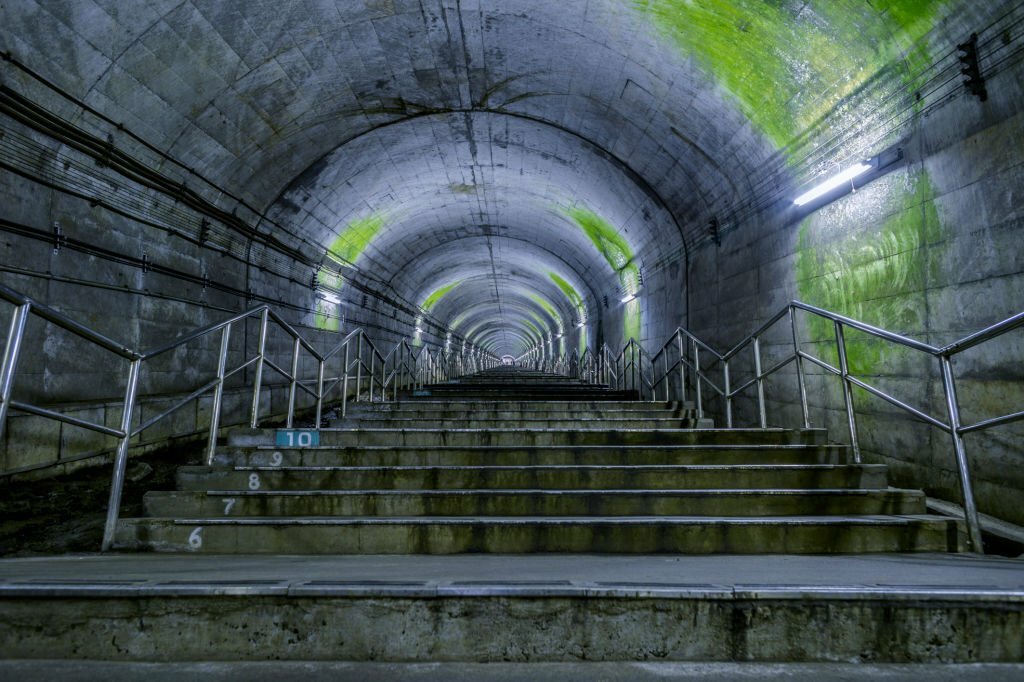
Japan, a land steeped in ancient traditions and stories, is also home to some of the most spine-chilling haunted locations in the world. From mist-shrouded castles with samurai ghosts to abandoned hospitals where spectral nurses roam, these sites are not for the faint of heart.
Standing on the edge of a cliff where the wind carries whispers of the past or walking through an old village where each step echoes supernatural tales.
In this journey through Japan's most haunted spots, you'll encounter the eerie silence of desolate spaces and the sudden chill that tells you you're not alone.
Get ready to explore five places where the line between this world and the next seems to blur, where every shadow could hide a ghostly presence waiting to tell its story.
Okiku's Well
Himeji Castle, Japan's largest and most famous castle, earned UNESCO World Heritage status in 1993. People from all over the world flock to this historic site to admire its beauty. But what many may need to realize is that right by the castle's entrance, there's a well with a chilling story.
This well is known as Okiku's Well, wrapped in a centuries-old tale of love and tragedy. While there are various versions of the story, the most popular one recounts the life of Okiku, a servant girl serving under the samurai Aoyama Tessan. Aoyama hatches a plan to overthrow their lord. Still, Okiku catches wind of his scheme and alerts her lover, a loyal warrior.
Aoyama had a soft spot for Okiku and offered her a deal: he wouldn't harm her if she became his lover. However, her heart belonged to another, and she declined his proposal. In a desperate attempt to force her compliance, Aoyama stole one of ten precious heirloom plates owned by their court.
When that failed to sway her, he resorted to brutal torture and accused her of stealing the plates. As a final act of cruelty, he threw her into the well.
What followed was a haunting sequence of events. Aoyama started hearing Okiku's voice counting the plates from one to nine before it erupted into a piercing scream and inconsolable sobbing. These nightly apparitions drove Aoyama to madness, and the legend persists that Okiku's anguished cries still echo through the halls of Himeji Castle every night.
Oiran Buchi
Saiko Waterfall, a place of natural beauty along an old road once part of National Highway 411, hides a dark history from the 16th century. The wealthy Takeda clan, who struck gold in the landlocked region, concealed their riches in the hills. But during the Battle of Nagashino in 1575, they faced defeat and panic, fearing the prostitutes who entertained their men had discovered the gold's location.
To prevent the secret from spreading, they lured the women to a platform over the Yanagisawa River, where it collapsed, causing all fifty-five women to plunge into the ravine below, meeting a tragic end. The site is believed to be haunted by their spirits.
Yuubetsu Coal Mine
In 1923, Yuubetsu coal mining town and its railway were established, growing to become one of Japan's largest coal-producing towns by 1967. With around 15,000 residents at its peak, it offered essential amenities like a hospital, school, and theater.
However, tragedies, including gas explosions, cave-ins, and an outbreak of dysentery, led to around 187 lives lost over 47 years. In 1970, the village closed, becoming a ghost town.
Due to its tragic history, Yuubetsu is believed to be haunted, especially the hospital. Visitors report eerie experiences like hearing a woman's screams and footsteps. Some feel dizzy and get migraines, and their phones ring incessantly with weird sounds when they try to leave.
The Round Schoolhouse
Built-in 1906 as Bannosawa Simple Education Centre, this round-shaped schoolhouse aimed to educate children from the nearby Mitsubishi Bibai coal mine. Over the years, it changed names, eventually becoming Numahigashi Elementary School.
Initially, it had a small student population, but from 1940 to 1970, as the coal mine thrived, the number of students grew to about 1,500. In 1974, the school suddenly closed, officially attributed to declining attendance due to the mining village's closure. However, suspicions of a darker reason persisted.
Records show that a young girl vanished during a class break, and her family had no knowledge of her whereabouts. Despite a frantic search and police involvement, she remained missing. Rumors spread that she had been "spirited away."
Today, visitors and locals claim to have encountered her spirit, often seen with a red backpack and hearing giggles from the nearby forest. Some believe darker entities inhabit the school grounds, leading to madness for some who visit.
Mount Osore
Osorezan, originally Mt. Usori and later renamed "Osore" (meaning fear or dread), ranks among Japan's three most sacred sites. Today, it hosts the Bodai-ji temple, where "itako" female mediums communicate with the departed. Osorezan offers glimpses into Buddhist concepts of paradise and hell, serving as a gateway to the underworld.
Though the last eruption was 10,000 years ago, the air around Osorezan is sulfur-laden, and steaming vents indicate its active volcano status. Nearby, Lake Usori holds highly acidic water, sustaining only one fish species, the Japanese dace. The venomous mamushi snake thrives in this harsh environment.
To add to its eerie allure, Osorezan has its version of the River Styx, "Sanzu no Kawa," where departed souls must cross to reach the afterlife. Despite its "Fear Mountain" nickname, Osorezan boasts a surreal and indescribable beauty, drawing travelers worldwide with its rich history and rumored spiritual energy.